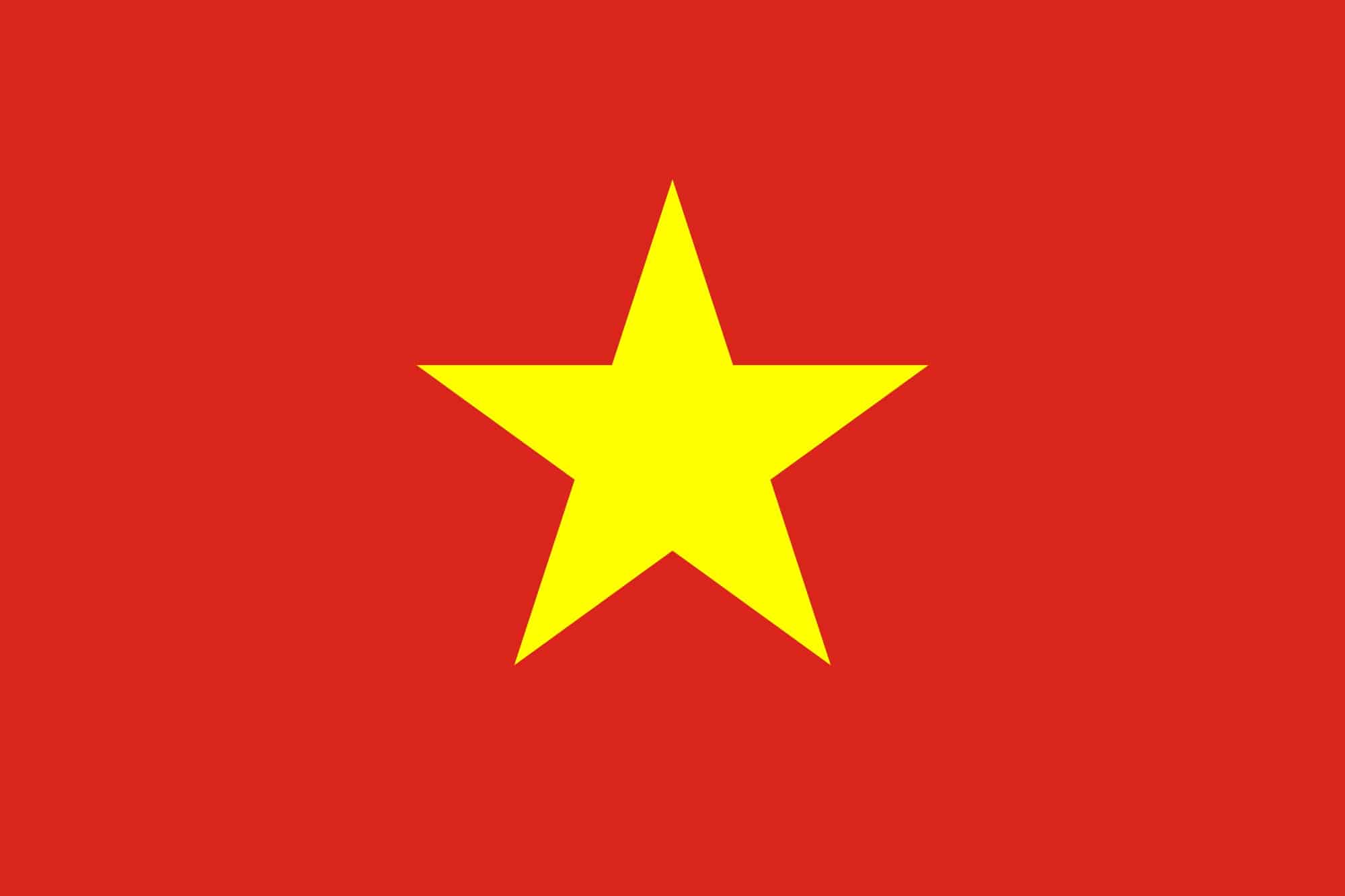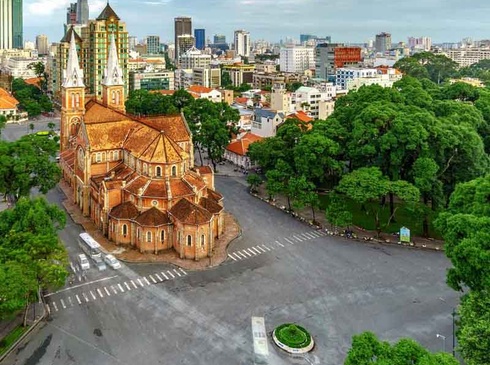When to Visit Vietnam for the Perfect Tour
Vietnam's weather possesses an enchanting charisma, akin to a beautiful yet enigmatic girl, setting it apart from neighboring countries like Laos and Cambodia. Weather patterns differ throughout the North, Center, and South of Vietnam, even during the same time of year. Planning the ideal time to visit may seem daunting, but fear not! We will delve into the details and craft the perfect itinerary for you, ensuring you experience the best of Vietnam, regardless of the month you travel.
THE NORTH
HANOI, HA LONG BAY, SAPA, MAI CHAU,
HA GIANG, BA BE LAKE
Hanoi and other provinces in the North of Vietnam experience four distinct seasons: Spring, Summer, Autumn, and Winter. Spring, which spans from February to April, is characterized by occasional drizzles and high humidity. During this time, temperatures range from 9-19°C (48-66°F), and even lower in mountainous regions like Sapa, Bac Ha, Dien Bien, Ha Giang, Ba Be, Mai Chau, Moc Chau, Pu Luong. Spring marks the awakening of nature, with trees bursting forth their green buds and flowers adorning the mountains. It is a paradise for flower photo enthusiasts; however, swimming in Ha Long Bay or other Northern beaches may not be feasible due to the cold. Additionally, foggy conditions occasionally hinder hiking in Sapa or Mai Chau, obstructing the stunning scenery that surrounds you.

Summer in Vietnam spans from May to August, with temperatures occasionally reaching a scorching 41°C (105°F). Walking through Hanoi during this season can feel like sitting in a gigantic sauna. To beat the heat, cold bottles of water are readily available everywhere, so we suggest always carrying at least two during the summer months.
Despite the sweltering weather, summer is an excellent time to explore the enchanting Ha Long Bay, Cat Ba Island, and other stunning beaches in northern Vietnam. For photographers, both amateurs and professionals alike, this season offers the opportunity to capture the breathtaking beauty of the lush green rice terraces in Sapa, Mu Cang Chai, Mai Chau, Pu Luong, and Dien Bien. As summer progresses, the rice terraces transform from verdant carpets into captivating yellow landscapes.
However, it is worth noting that summer also brings the occasional typhoon, originating in the Pacific Ocean and passing through the Philippines before reaching Vietnam. These typhoons typically occur multiple times in July and August, resulting in heavy rain and strong winds around Ha Long Bay. While most trips to Ha Long Bay during the summer remain unaffected, some may encounter brief showers or storms lasting only a couple of hours. If your Halong Bay trip coincides with a predicted typhoon, and it becomes impractical to continue with your boat cruise, rest assured that we will monitor the weather and reschedule your visit in advance.
.jpg)
In mountainous regions like Sapa and other northern areas, rains rarely persist for more than two to three consecutive days. Typically, you can expect a few hours of rain before it clears up. Moreover, trekking routes can be adjusted to avoid muddy paths, as the terrain offers various alternatives.
In summary, while summer in Vietnam presents challenges such as intense heat and occasional typhoons, it also offers incredible opportunities to explore stunning destinations and capture unforgettable moments.
Autumn is an ideal time to visit Hanoi and the remote areas of the North for pleasant weather and breathtaking scenery. From September, temperatures hover around 24-25°C (74-77°F), making it perfect for exploring Hanoi on foot. As autumn unfolds, gentle sunshine bathes the city, with leaves gradually transforming into vibrant hues. The picturesque rice terraces of Sapa turn a beautiful yellow by September before they are harvested, while the majestic mountains remain lush and green.
For those seeking a cooler experience (although not chilly for European visitors!), the winter months from November to January offer a refreshing escape. With temperatures ranging from 5-7°C (41-55°F) in the lowest and 15-17°C (59-62°F) in the highest, this season allows for tranquil hikes and exploration. In the mountain regions, such as Sapa, Fansipan mountain, or Mau Son peak in Lang Son province, the temperatures occasionally dip below freezing, creating a captivating sight of snow-covered landscapes. In fact, the rare occurrence of snow in 2016 attracted thousands of local youth who were eager to touch the snow or capture memorable photos.
With pleasant temperatures, lush greenery, and captivating landscapes, autumn and winter in Hanoi and the North of Vietnam provide an enchanting experience for every traveler.
THE CENTER
HUE, HOI AN, DANANG, NHA TRANG
The central region of Vietnam offers a wide range of attractions and experiences. Explore majestic wonders like the Son Doong cave, the world's largest cave located in Quang Binh, as well as the Phong Nha Ke Bang National Park, Phong Nha cave, and Thien Duong Cave. Immerse yourself in history by visiting the war remnants in Quang Tri or the cultural gems of Hue and Hoi An. Don't miss the natural beauty of Bach Ma National Park or the vibrant cities of Danang, Hoi An, Quy Nhon, Tuy Hoa, and Nha Trang.
If you're looking for a beach getaway, the best time to visit the central region is from March to August. During this period, you can enjoy the bright sunshine, high temperatures (up to 38+ C / 100 F on some days), and low humidity. It's an ideal time for a honeymoon or a family vacation.

The rainy season in this region typically occurs from September to December, with November being the wettest month, accounting for around 30% of the annual rainfall. Although rain can be continuous for days or even weeks, you can still explore the sites by taking a car transfer from your hotel or using a raincoat, sturdy umbrella, and waterproof shoes. We recommend packing shoes that you don't mind getting wet or muddy, a rain jacket or poncho, and a sturdy umbrella during this time. Biking and motorbiking are better options in other regions during the rainy season.
January and February have the lowest rainfall, but it can be chilly due to the winter effect from the North of Vietnam. These months are ideal for visiting historical cities like Hue and Hoi An in the central region.
In summary, for beach enthusiasts, the center of Vietnam provides the best beach stays from March to August. However, for those interested in historical stories, oriental architecture, culture, and culinary delights, the central region of Vietnam is an ideal destination all year round, even on rainy days. Just be prepared to switch from motorbikes to cars and bring along a raincoat or umbrella.
Let us help you make the most of your visit to the central region by recommending the best places to explore, tailored to your preferences and accommodation needs.
THE SOUTH
DALAT, HO CHI MINH CITY, MEKONG DELTA,
PHU QUOC ISLAND
In the southern region of Vietnam, the weather is characterized by two distinct seasons. Starting from Dalat, Ninh Thuan, Binh Thuan, Phan Thiet, Mui Ne, Dong Nai, Cat Tien National Park, Ho Chi Minh City, My Tho, Ben Tre, Sa Dec, Tram Chim National Park, Can Tho, Chau Doc, Phu Quoc Island, Con Dao Island, Vung Tau, and Long Hai Beach, the climate is generally predictable.
The rainy season extends from May to October, with frequent afternoon and nighttime showers, accompanied by sunny mornings. Thunder showers may occur suddenly but do not last long. During this period, certain activities such as bird watching and pure beach relaxation are not recommended. However, Vietnam's southern destinations, including Con Dao Island, Phu Quoc Island, Vung Tau, Phan Thiet, and Mui Ne, boast the best beaches. From May to October, these areas experience lower occupancy rates due to the daily rainfall and rough seas with cold water and strong waves. Nevertheless, this time presents an opportunity for deals if your expectations are aligned.

On the other hand, the dry season spans from November to April in the south of Vietnam, with average temperatures hovering around 29°C (84°F) and occasionally reaching up to 40°C (104°F). This period is ideal for planning a beach holiday, especially in Phu Quoc Island, Con Dao Island, Vung Tau, Phan Thiet, and Mui Ne, as locals and visitors alike flock to these hot destinations. Notably, this is the perfect time for engaging in activities such as swimming, snorkeling, kite surfing, and wind surfing. Additionally, the dry months offer prime conditions for cruising the Mekong River, exploring the Mekong Delta, and observing wildlife in national parks or engaging in bird watching.
WE HOPE THAT HELPS
Welcome to our overview of Vietnam weather. We value the feedback of hundreds of clients who have shared their experiences throughout the year. With our expertise, we can help you craft the perfect itinerary, tailored to your preferences and availability. Reach out to us today to begin planning your free personalized trip.







